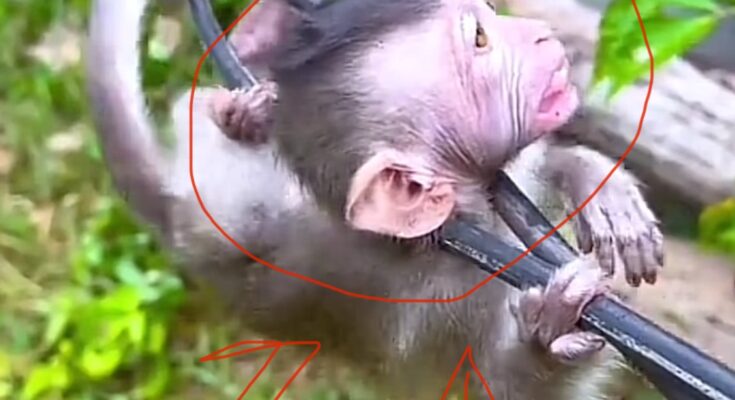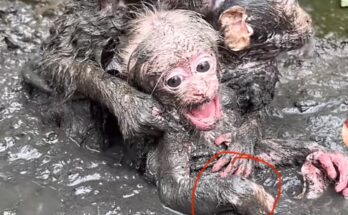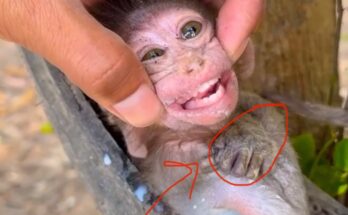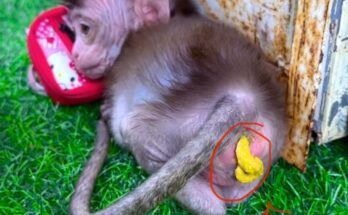In a heartbreaking incident that has sparked both sorrow and concern, a young monkey tragically lost its life after coming into contact with a live electrical wire. The incident, which occurred near a residential area bordering a forest, serves as a grim reminder of the increasing dangers that urbanization poses to wildlife.
A Curious Life Cut Short
The monkey, believed to be just a few months old, was part of a small troop that often roamed the outskirts of the neighborhood in search of food and water. Residents had grown accustomed to their presence and often watched the playful antics of the young ones with joy. But on this particular morning, tragedy struck.
According to witnesses, the young monkey had climbed onto an electrical pole while attempting to jump across to a tree. Unaware of the danger, it touched an exposed live wire and was electrocuted instantly. Locals reported hearing a loud crack, followed by the sight of the monkey falling to the ground. Despite efforts by animal welfare volunteers to revive it, the little creature had already passed away.
Human-Wildlife Conflict on the Rise
This incident is not an isolated case. As cities expand and forests shrink, wild animals—especially monkeys, birds, and squirrels—are increasingly coming into contact with electrical infrastructure. In many regions, the lack of insulated or protected wiring puts animals at high risk of electrocution.
Environmental activists have long warned about the consequences of encroaching urban development. “We are taking over their homes, and yet we are not adapting our infrastructure to be wildlife-safe,” said Priya Nair, a local wildlife conservationist. “This tragic loss could have been avoided with better electrical safety measures.”
The Need for Wildlife-Friendly Infrastructure
Experts believe that simple interventions can drastically reduce such incidents. These include:
-
Insulating exposed electrical wires, especially in areas close to forests or known animal paths.
-
Installing barriers around power transformers and poles.
-
Creating safe wildlife corridors that allow animals to move between green areas without crossing human infrastructure.
Many countries have already implemented such measures with success. In parts of Africa and South Asia, for instance, insulated wiring and monkey bridges—simple rope structures between trees—have reduced electrocution and roadkill rates.
A Wake-Up Call
The death of the little monkey has triggered a wave of emotion among local residents, many of whom shared videos and tributes on social media. Some have even begun petitioning local authorities to improve electrical safety in the area.
“This wasn’t just a monkey—it was a part of our environment, our community,” said one resident. “We must do better.”
While nothing can undo this particular tragedy, it stands as a powerful reminder: the more we share space with wildlife, the more we must take responsibility for their safety. Protecting nature isn’t just about saving forests—sometimes, it’s about saving one small life at a time.



